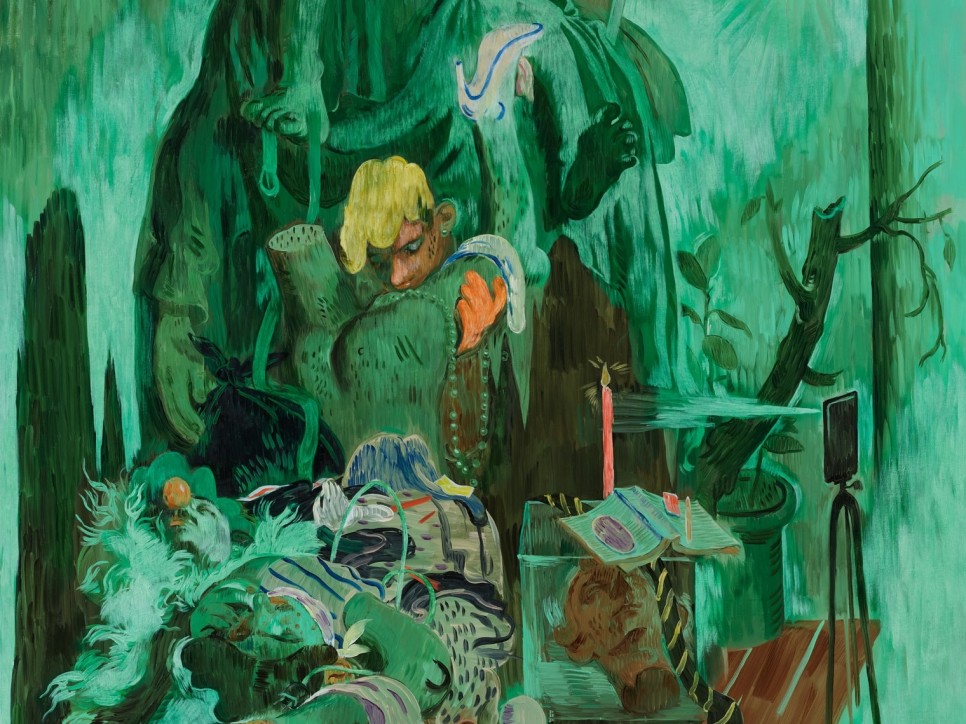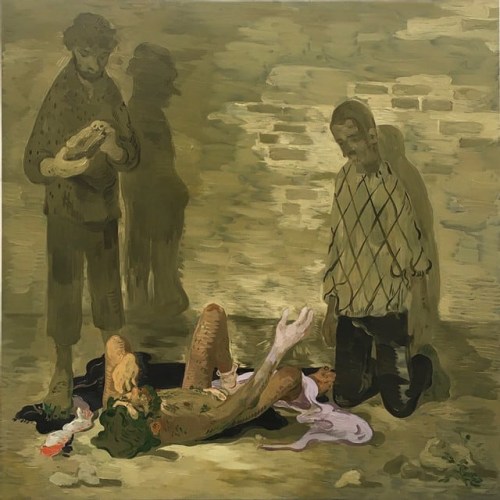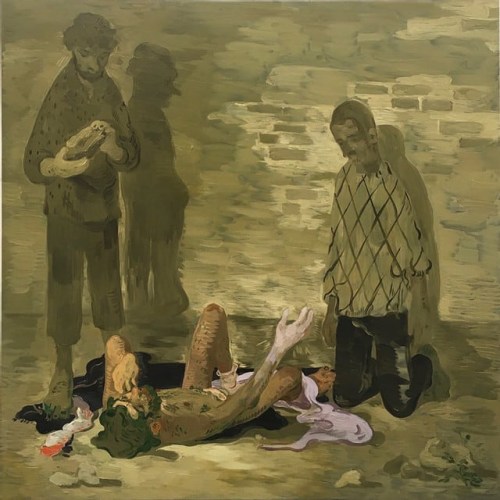

Salman Toor, Nightmare, 2020, Oil on plywood, private collection.
Slender, agile figures, with wistful expressions, engaged in unremarkable activities in very particular settings. Vigorous brushmarks and sensuous paint. Passionate color, now intense and delectable, now dulled down and a little murky. Diaristic implied narratives, enacted by multiple characters. Ambiguous, contemplative, pared-down images, with everything intensified by animated contours. Energetically brushed expanses that seem to press upon the protagonists of the elusive dramas. We begin to recognize a narrow-faced, handsome, dark-bearded fellow who appears and reappears, in different guises, and soon realize that he and many of the other figures share an exaggeratedly long nose, as if they were all members of the same family. Pinocchio? Fierce. Playful. Elegant expressionism? Mannerism, wrenched into the twenty-first century?
These are first impressions of “Salman Toor: How Will I Know,” the young, Pakistani-born artist’s first solo museum show, part of the emerging artists’ program at the Whitney Museum. (The title comes from a song that the artist says he likes dancing to.) Organized by Christopher Y. Lew, a curator at the Whitney, and Ambika Trasi, curatorial assistant, the exhibition brings together fifteen of Toor’s recent paintings on plywood, made between 2018 and 2020. We learn that Toor, born in Lahore, Pakistan, in 1983, has an mfa from the Pratt Institute and now lives mostly in New York. He paints, we are told, imagined “intimate views of young, queer Brown men in New York and South Asia,” and considers the figures who populate his paintings “to be fictional versions of himself and his friends.”
Four Friends (2019, private collection), the first work we encounter, states the principal theme of “How Will I Know” and announces Toor’s strengths as a provocative storyteller, colorist, and manipulator of paint. Two lean young men dance ecstatically in a sparsely furnished, eerily lit living room. Two others, one with a mop of dirty blond curls, cuddle on a sofa, cell phone and drink in hand. A flood of urgently brushed, aqueous green dominates the setting. The paint sits up on the hard surface of the plywood. The inflections of the robust application slow down our exploration of the green surface, yet, despite this nod at painterly painting, the agitated green-ness holds everything together the way the subtly modulated, untroubled field of red does Henri Matisse’s The Red Studio. The delicious pink trousers of the central, upright dancer anchor the entire painting, making us take into account his pink neckerchief and then follow the many notes of dull yellow that flicker through the painting: socks, shirt, a lamp base, skin tones.
Read full article at newcriterion.com

